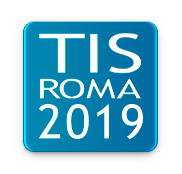TIS 2019
Session 12 – Sustainable Mobility Planning

In this session, chared by Vincenza Torrisi, many different solutions are presented in order to substitute the current situtation in the transportation. Many of them are based on sustainable alternatives as cycling and pedestrian mobility.
Socrates Basbas, Tiziana Campisi, Antonino Canale, Andreas Nikiforiadis and Chiara Gruden – The slow mobility and safety assessment linked to the variation of pedestrian flows at pedestrian areas / Pedestrian mobility is one of the most sustainable alternatives, given that there is a growing demand for pedestrian and cycable mobility. But it also requires different interventions to some infrastructures. This study is based on a case study of Kalamaria, the municipality of Thessaloniki. The pedestrian network in the CBD promotes sustainable mobility, taking into account its three pillars, namely economic, social and environmental. There are also included the results of various questionnaire-based research efforts dealing quality of the pedestrian environment, mainly in terms of safety and comfort, as it is perceived by the users. One of the methods used is the micro-simulation method conducted through the use of Viswalk which is a microscopic software for pedestrian simulation. The conclusion of Kalamaria case is that it is possible to increase number of pedestrians due to the overall development of the area because of the construction of the metro station and the corresponding changes in the land use system.
Leonardo Caggiani, Rosalia Camporeale, Branka Dimitrijević and Milorad Vidović – An Equity-Based Approach for Station-Based Bike-Sharing System Design / Shared mobility systems are more and more promoted. In particular, Bike-Sharing Systems (BSS) have recently become exceptionally popular for inner-city transportation. Still there is concern that bike-sharing may not be appropriately reaching low-income citizens, or that some socio-economic groups could face barriers in the access to the system. With this research, it is given a twofold contribution. On one hand, a measurable and quantifiable equity indicator is proposed, aimed to minimize barriers in accessing BSS that some socio-economic groups could be faced to. On the other hand, there is a BSS design Mixed Integer Linear Programming model that incorporates the defined equity indicator. The suggested original model determines the number and layout of bike stations, as well as the number of bicycles and racks, aiming to minimize the costs of implementation and operation of the system.
Matteo Ignaccolo, Giuseppe Inturri, Nadia Giuffrida, Michela Le Pira and Vincenza Torrisi – A step towards walkable environments: spatial analysis of pedestrian compatibility in an urban context / Road transport represents 82% of all the transport energy consumption. There is a need for finding sustainable transport modes for limiting the increase in motorization and reducing car dependency and pedestrian mobility is a good opportunity for that. However, in contexts characterized by limited resources, a priority of investments for developing walkable streets should be defined, paying careful attention to land use asset (e.g. points of interest). This paper presents a procedure based on a spatial analysis to assess the pedestrian compatibility of streets in an urban area. The aim is to provide decision-makers with a planning-support method that can aid them to decide the priority of investments, based on street centrality and pedestrian compatibility. The case study is Acireale, a city on Sicily and the analysis focused on the road network connecting the main points of interests within the city centre. Based on different criteria an overall index of pedestrian compatibility was defined. The developed GIS-based vector-model includes readily available data sources in an easily interpretable graphical format suitable for decision-makers to support the design of walkable environments.
Enrico Pagliari and Lucio Quaglia – Sustainable Urban Mobility Plans (SUMPs) and Urban Sustainable Islands (USIs) / Vulnerable road users are a very critical issue and not only in Italy. There are high accident rates involving soft mobility – i.e. vulnerable road users (pedestrians and cyclists). This study analyses a possible solution to this problem based on the reclassification of the urban roads in two levels. It has been estimated that depending on the size of the city and the structure of the road network, 25% to 50% of the urban road network should be reserved to the main road network, while the remaining percentage could be designed as USIs.
Sanja Šurdonja, Aleksandra Deluka-Tibljaš and Tullio Giuffrè – Smart Mobility solutions – necessary precondition for a well-functioning Smart City / This paper aims to answer following questions: how can we influence people’s habits and are they pepaed for these new solutions? In order to answer these questions a Smart Mobility Survey has been conducted in Croatia. Sustainable management of urban areas, is becoming one of the most important challenges of the 21st century. The result of good sustainable management is Smart City, in which social-capital, traditional and modern communication infrastructure encourage sustainable economic development and high quality of life. Smart Mobility, one of the several smart systems in Smart City, is often highlighted as a key system without which the Smart City could not be sustainable. It’s purpose is to reduse polluton and noice in the city, to reduce traffic jams and movement costs, and to increase safety and movement speed. This paper shows the results of the survey conducted in Croatia and a comparison with the results of the same survey conducted in Italy.
CHAIRMAN: Vincenza Torrisi
